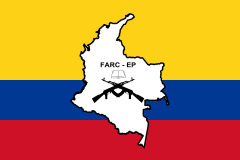The greatest risks of flooding are located in La Mojana, the Uraba Gulf, the south of Choco, Antioquia, and Norte de Santander.
On Thursday, President Gustavo Petro announced that his administration is evaluating the possibility of declaring an "economic emergency" in Colombia due to the upcoming winter season, which could trigger a climate crisis due to the possible increase in rainy activity.
During a visit to the Atlantico department, he asked institutions involved in risk management to establish preventive measures, mainly in the most vulnerable areas of the country.
Previously, the Colombian Institute of Hydrology, Meteorology and Environmental Studies (IDEAM) warned that the rainy season could extend up to December. Compared to previous years, it could be up to 40 percent more active in the Andean region and 20 percent more rigorous in the Caribbean areas.
"If we are going to experience a worse period than the one that occurred in 2010, the country has to enter into an economic emergency," Petro stated, recalling that the problems accumulated since the pandemic could worsen as a result of extreme weather events.
"We are risking the skin of ourselves and our children," he said to highlight the magnitude of the economic difficulties that the rains, landslides and floods could cause.
The Colombian president mentioned the possibility of quickly preparing updated risk maps to locate the most dangerous areas and proceed with the voluntary relocation of the population.
According to IDEAM data, the greatest risks of flooding are locatedin La Mojana, the Uraba Gulf, the south of Choco, Antioquia, and Norte de Santander.
by teleSUR/ JF

